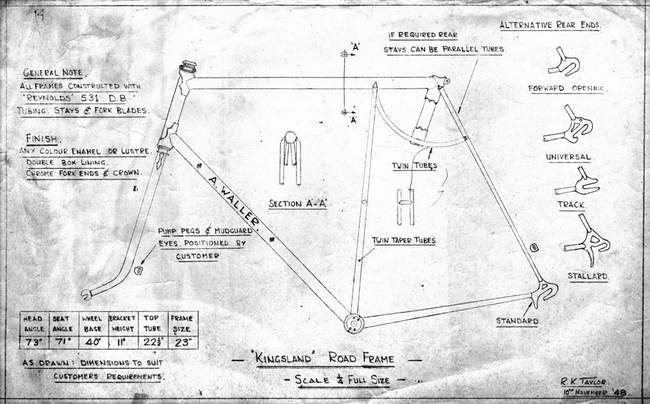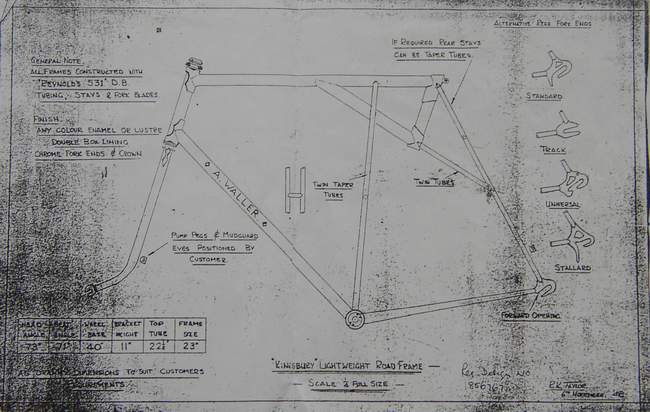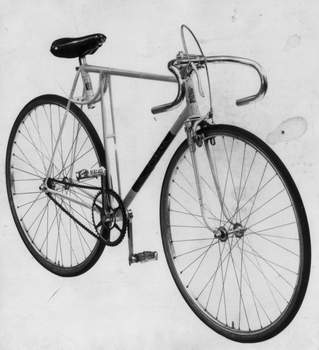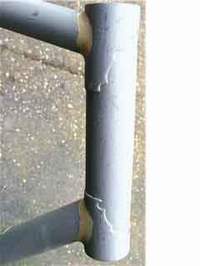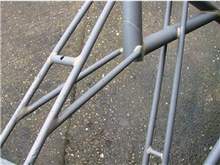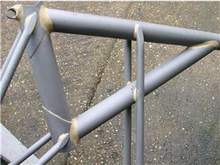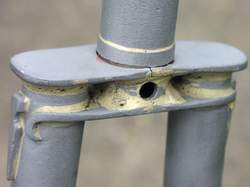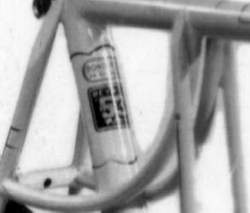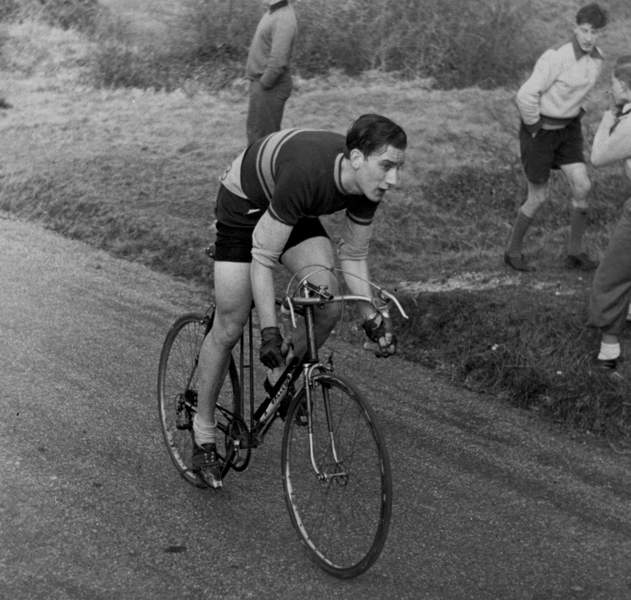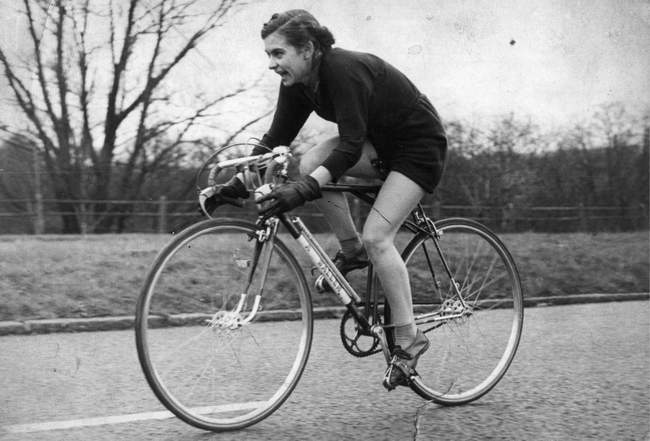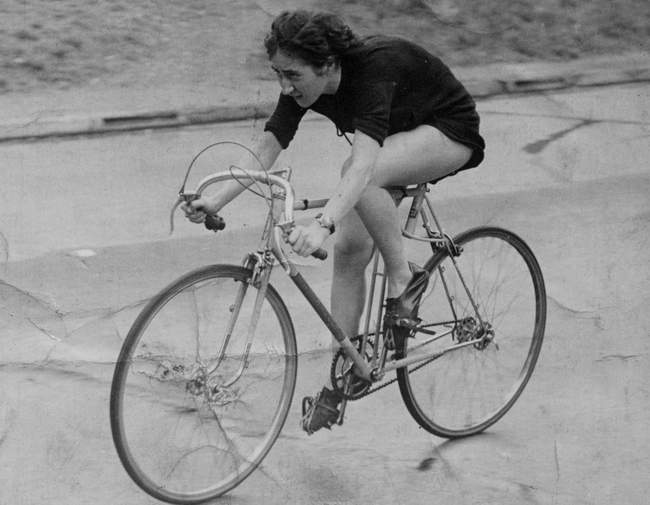Waller, A
Posted: Saturday 06th June 2020
Arthur James Waller was born in London on 4th January, 1917(1). He was a regular soldier in the Blues and Royals prior to the Second World War and during the war he served as a dispatch rider, when riding a motorcycle during the blackout, he lost sight of the white line in the middle of the road and crashed into a lamppost shattering his left leg, and was invalided out of the Army(2).
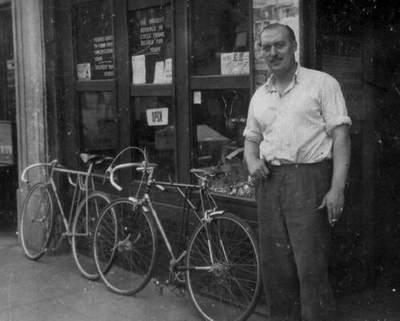
After the war Waller opened a shop at 325, Kingsland Road, London E8, and in a letter dated March 29th.1982 to Len Phipps, Waller refers to “…37 years of trading at this address”, implying that he set up business in 1945.
In an interview in 1987 with Hilary Stone, Waller said that he had learnt to weld and braze in the army. On the strength of this, Waller decided to take up frame-building, including the building of short-wheelbase frames of his own distinctive design.
Waller stated the purpose of these designs in a letter of 29th March, 1982 to Len Phipps: “They were built to specification primarily for hill climbing, being very short wheelbase. The reason for this unorthodox design being of girder construction was to minimise whip, this being essential for hill climbing and short wheelbase to minimise drag, another essential for hill climbing. We managed to reduce the wheelbase to some 37.5 inches with 27 inch wheels and still maintain a good riding position. Some clubmen in those days preferred this design for racing and touring. The frames were tested by Harry Oxley, the professional, who was well known in those days and gave them a very good write-up”. I have so far been unable to trace Oxley’s report, which I assume would have appeared in one of the cycling publications of the late 1940s or early 1950s.
The first of Waller’s unique designs was named “Kingsland”, presumably after the shop’s address. The frame is welded (lugless) throughout, with decorative sleeves on the head tube and seat tube.
This model differs from the Kingsland in that the truncated seat tube is supported by two small-diameter, straight tubes running from the seat stays to the seat tube, and by a single, larger tube which runs between the twin vertical tubes, and then joins the underside of the top tube several inches forward of the twin tubes. Details of Kingsbury frame number AW19491 below.
Waller described the Kingsbury in his letter of December 1983 to Cycling World as “an improvement in design”. John Conway, who commuted from Loughton in Essex to the City of London during the late 1940’s and early 1950’s, discovered Waller’s shop when he changed the route of his commute, and recalls from his visits to the shop that the Kingsbury cost about £1 more than the Kingsland, and that each of the frames cost less than £20 (3).
Waller used 531 Butted Tubing for the top tube, seat tube and down tube 4, but the composition of the vertical tubes, forks and stays is unknown.
Waller also designed a tandem, but although a drawing was produced, and hung in his shop with drawings of the solos 5, neither the drawing, nor an actual frameset, has come to my attention so far.
Waller decided to register his designs and in October 1949 he received the official Certificates of Filing Application for Design Registration of the solo and tandem designs from the patent agents. The actual Registered Design certificates followed early in January 1950(6).
A drawing of a conventional frame, with Ekla lugs, was also produced, and John Conway recalls seeing an Ekla-lugged Waller during his visits to the shop(7).
During the late 1940s there was a shortage of frame-building materials and a number of builders produced their own twin-plate fork crowns; Waller was no exception and an example of his design appears left (courtesy Peter Brown). (This photograph also serves to illustrate the standard of his brazing, which was of variable quality). Conventional fork crowns were also used when available.
Production of these frames appears to have commenced in the late 1940’s but it is unclear when the last ones were made since the serial number ranges vary over the very small sample notified to me so far. (16 frames in total, of which I have the serial numbers for 13)
The most readily deciphered numbers follow the pattern of Waller’s initials, then the year of manufacture, then the number of the frame in that year’s production sequence. For example, the number of my own Kingsbury is AW 1949 1, i.e. the first frame of 1949. The earliest frame notified to me in this sequence is AW 1948 30, i.e. the 30th frame built in 1948.
The remaining serial numbers are mostly in the 1000 range, starting with 1049, and ending with 1158, although I have also been notified of frames with the serial numbers .01, 135 and 22884, though the reason for these discrepancies is a mystery at present.
During the interview with Hilary Stone Waller stated that he had finished frame production by 1952 or 1953, so the production span would appear to be approximately five years. According to available evidence, the business was a one-man operation, and as far as I am aware, Waller’s frames were not marketed through other cycle shops, so unlike other unorthodox frame builders Waller’s market was limited to East and North London.
Even in the early days the business operated on a small scale. John Conway recalls from his visits that Waller operated on his own and that he carried little stock; he never saw more than about four complete machines in the shop, and nor did Waller have the stock of framesets one usually saw hanging up in other lightweight shops 8. However, from Hilary Stone’s recollection, the business continued until the mid-1980s, and according to Mervyn Pearson, survived mainly on repairs and sale of second-hand machines 9. In his letter of March 29th 1982 to Len Phipps, Waller stated that he was in the process of closing down, but that his son assured him that “…they will at some future date restart building these frames, but unfortunately they may be manufactured abroad and imported into this country”.
Albert Waller died in September 2003 at the age of 86 10.
For those wishing to re-enamel a Waller frameset, the transfers, some of which are available from Nick Tithecott, appear to have been located originally as follows.
Down tube transfers: “A WALLER” in block capitals, one either side of the down tube, sometimes in a contrasting-coloured panel.
Head tube transfer: on the head tube ONLY.
Seat tube: on most re-enamelled frames I have seen, the head tube transfer has also been applied to the seat tube, whereas the seat tube should have a “Bonderised” transfer over a Reynolds “531 Butted Frame Tubes” transfer, NOT the “531 Butted Tubes, Forks and stays” transfer.
Model name, “Designed and Built by…” and “Registered Design” transfers: I have been unable to locate these transfers on the photographs provided by Hilary Stone. In the absence of pictorial evidence, I suggest the following locations:
“Regd Design” on the top of the down tube, just below the head lug.
“Designed and built by” on the top of the down tube just below the “Regd. Design”.
Model name on the off side of the top tube, about 3″ back from the head tube.
Annotations to Waller Article
(1) Ancestry.co.uk. England and Wales, Death Index: 1984-2005.
(2) Letter from Tony Arscott to Peter Brown, 2005.
(3) Email from John Conway to Neil Foddering on 6th June, 2008.
(4) Enlargements of seat tube transfers from photos provided by Hilary Stone.
(5) Letter from Tony Arscott to Peter Brown, 2005.
(6) Letters dated 11th October 1949 (Certificates of Filing Applications) and 4th January 1950 (Certificates of Design Registration) from King’s Patent Agency Ltd., London EC4, in respect of Registered Design numbers 859.933 (tandem) and 859.934 (solo). (Courtesy of Hilary Stone).
(7) Email from John Conway to Neil Foddering on 7th June, 2008.
(8) Email from John Conway to Neil Foddering on 7th June, 2008.
(9)Telephone conversation with Mervyn Pearson on 12th December 2005.
(10)Ancestry.co.uk. England and Wales, Death Index: 1984-2005.
Posted: Saturday 06th June 2020
This article appears in the following categories.
Upcoming Events
Whether you are looking for a gentle social meet up, or a 100-mile ride browse the community’s upcoming events and plan your next weekend outing.

